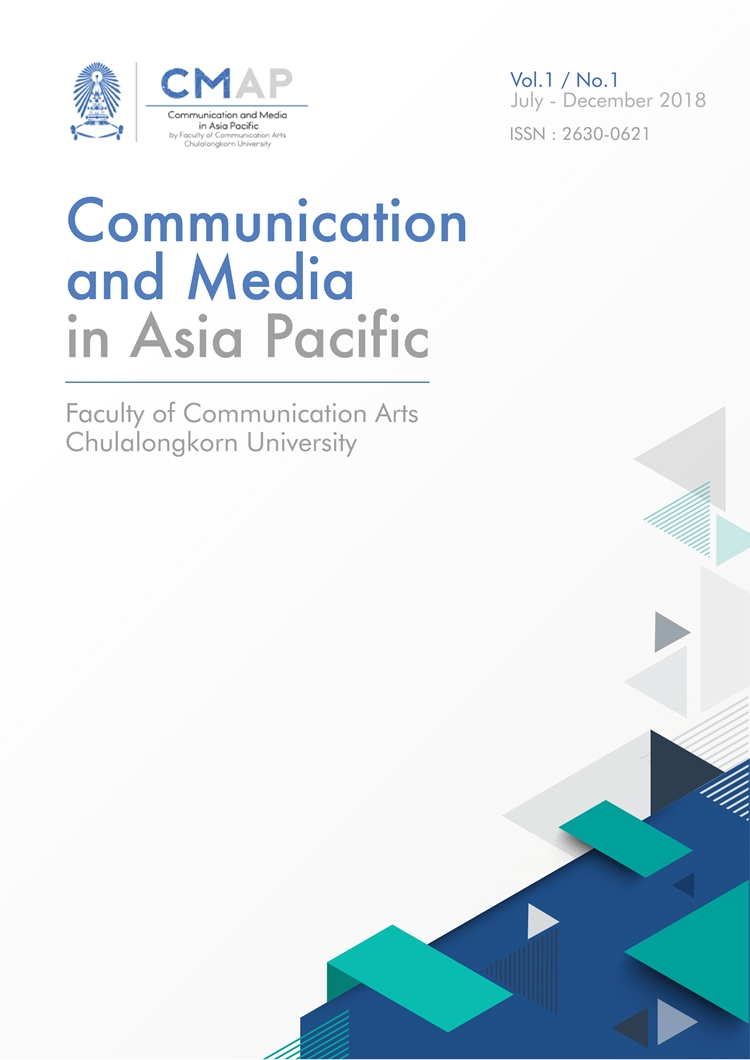GOVERNMENTAL PR AND INTERNATIONAL AFFAIRS: A STUDY OF THAI GOVERNMENTAL PR IN MANAGING THE HISTORICAL “PREAH VIHEAR” ISSUE OF THE NATIONAL AND TRANSNATIONAL PEACE
Main Article Content
Abstract
Introduction
Although “Public Relations” or “PR” is among a popular area of studies and a field of practices, lots of people tend to be confused when being asked on the roles of public relations professionals in society. Mainly, PR education has reflected its position as a field of study in applied social science, which was initiated from the US after the WWII. The PR discipline positions itself in the functional paradigm, which was grown from the integrated fields of social psychology, behavioral sciences, and management.
L’Etang (2009) pointed out that PR literature has a corporate and technocratic bias, with a less concern on the political aspects of organizations. In addition, she criticizes that PR seems somewhat like a US-based scientific discipline that focus on organization reputation and communication management of stakeholders, including the media.
A number of scholars have also challenged the field of PR, by proposing the expansion of the field beyond the organization perspective. By applying the relational approach into PR discipline, Falkhrimer (2006) proposed that we can interpret PR as “a communicative structuration force”. PR’s roles, according to Falkhrimer (2006), are constructed both in organizations, and between organizations and the exciting society. It implies that PR has its power in either what Falkhrimer (2006) called as the process of reproducing or the transforming social structures.
Therefore, PR practitioners, according to the relational perspective, act as “cultural intermediaries”, or “power brokers”. They play a particular role in linking an organization with stakeholders in their socio-cultural context, and take part in balancing the power of their organization and other stakeholders.
The concept of “Power”, therefore, has significantly become a topic of interests, especially after a number of scholars looked at the PR discipline from the normative and relational approach. According to L’Etang (2009), PR is related to power and power management, both in the visible and invisible states ranging from the political, economic, cultural, or even religious contexts and the elites. In addition, L’Etang (2009) believed that the core concept of “PR power” is perhaps related to the extent to which one can access to the media, own the media or manage the relationship with the media and other stakeholders in the society.
Richards (2004) also identified two groups of Power-related PR; The Power-based PR and The Value-based PR. The Power-based PR, according to Richards (2004), focuses on using all capacities to strengthen their own organization. The Value-based PR, on the other hands, concerned with its reputation that link with the value and standard of the society. In terms of communication and power, Graham (1995; cited in L’Etang, 2009) introduced the terms of power-with and power-over. Power-with implies that all stakeholders have power to interactively influence one another. Power-over, on the other hand, implies a one way influence from a stakeholder to others, which may lead to misinterpretation of the influencing message as “propagandas”, instead of persuasive messages.


